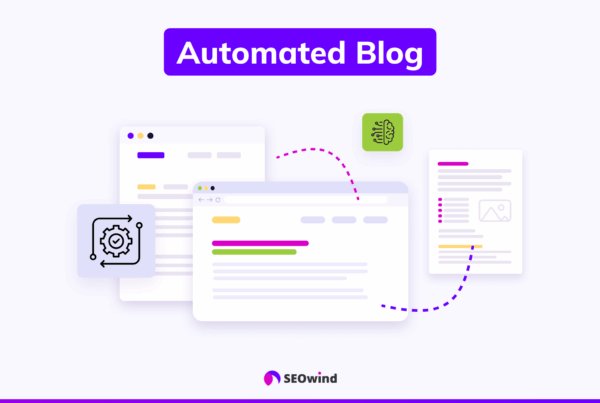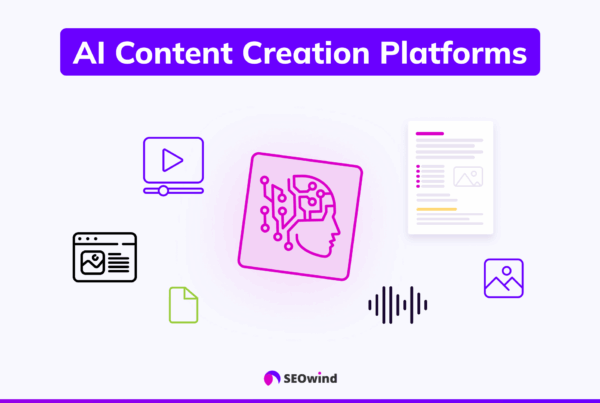Businesses need online visibility to thrive, so securing a spot on the first page of Google search results is a major goal. Achieving this is like having a prime storefront location in a bustling city center, which helps attract potential customers through visibility. But how do you obtain this coveted position? In this comprehensive guide, we’ll explore proven strategies and tips to help you rank on the first page of Google and unlock a world of opportunities for your business.
The Significance of Ranking First: Visibility, Traffic, and Engagement
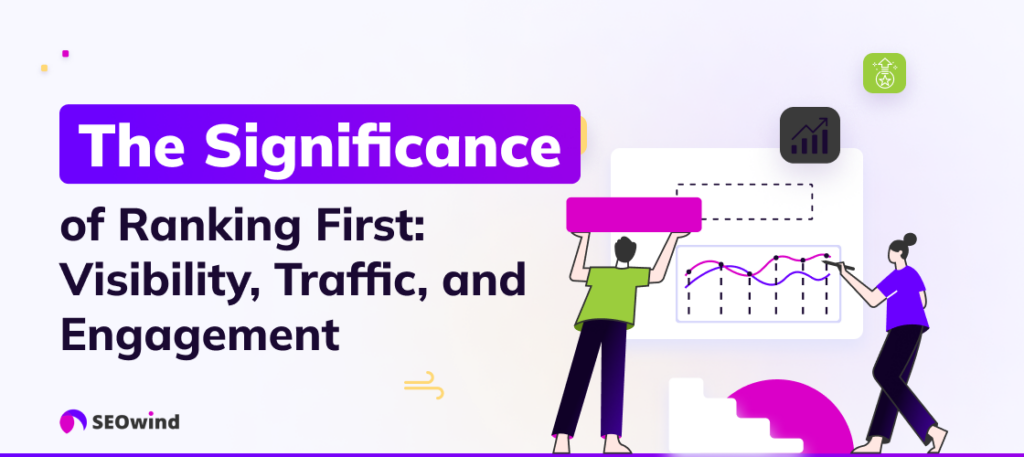
How often do you venture beyond the first page of Google results? Rarely, right? Studies have shown that the top organic search result on Google receives a staggering 31.7% of all clicks, while the second and third positions earn 24.7% and 18.7%, respectively. This means that if your website isn’t on the first page, you’re missing out on a significant chunk of potential traffic and engagement.
Ranking on the first page of Google increases your visibility and establishes trust and credibility with your target audience. Users who see your website among the top results subconsciously perceive your brand as more authoritative and relevant to their search query. This leads to higher click-through rates, increased conversions, and, ultimately, business growth.
On top of all that, ranking on the first page of Google can have a snowball effect on your online presence. As more users discover and engage with your website, it signals to Google that your content is valuable and relevant. This can further solidify your position on the first page and even propel you to the top spot. It’s a cycle that can transform your online visibility and drive long-term success.
But for any of this to happen, you still need to make it to the front page in the first place. To help you do so, here are some tips you can apply while publishing online content.
Tip 1: Understand Keyword Intent

To get on the first page of Google, you need to understand what your target audience is searching for and why. Keyword intent refers to the underlying reason behind a user’s search query. Are they looking for information, a specific product, or a service? Understanding the purpose behind the keywords you’re targeting is crucial for creating content that resonates with your audience and ranks well on Google.
Identify and Target the Right Keywords
The first step in understanding keyword intent is identifying the right keywords to target. Start by brainstorming a list of relevant keywords and phrases that your target audience might use when searching for your products or services. Use keyword research tools like Google Keyword Planner, Semrush, or Ahrefs to gather data on search volume, competition, and related keywords.
When selecting keywords, consider their relevance to your business, search volume, and competition level. Aim for keywords that have a high search volume but relatively low competition to give yourself the best chance possible to rank on the first page of Google.
Go after Long-Tail Keywords for Niche Targeting
In addition to targeting broad, high-volume keywords, focus on long-tail keywords, which are more specific and usually consist of three or more words. They tend to have lower search volume but higher conversion rates because they target a more focused audience.
For example, instead of targeting the general keyword “shoes,” you might target a long-tail keyword like “best-running shoes for flat feet.”
Keyword Intent: Align your pages with search intent
Once you’ve identified your target keywords, it’s time to create content that aligns with the user’s search intent. There are four main types of keyword intent:
- Informational: The user is looking for information on a specific topic, such as “how to get on the first page of Google.”
- Navigational: The user is looking for a specific website or page, such as “Facebook login.”
- Commercial: The user is researching a product or service before making a purchase, such as “best SEO tools.”
- Transactional: The user is ready to make a purchase, such as “buy SEO software.”
Your content must match the user’s intent to rank on the first page of Google. If someone is searching for informational content, provide a comprehensive guide or tutorial. If they want to make a purchase, offer product comparisons and reviews.
Additionally, consider your content’s format. If most of the top-ranking pages for a keyword are listicles, consider creating a listicle-style post. If the top results are in-depth guides, focus on creating a detailed, informative piece of content.
By understanding keyword intent and aligning your content accordingly, you’ll be well on your way to ranking on the first page of Google.
Tip 2: Create Superior Content That Surpasses Competitors

It almost goes without saying that if you want to outrank your competition, you need to create content that outshines your competitors. This means delivering high-quality, relevant, and comprehensive content. By providing valuable information that satisfies user intent, you’ll attract more visitors and keep them engaged on your site longer.
Deliver High Content Quality and Relevance
Quality content is the foundation of any successful SEO strategy. Your content should be well-researched, informative, and engaging. It should answer the questions your target audience is asking and offer solutions to their problems. By delivering high-quality content that is relevant to your users’ needs, you’ll establish yourself as an authority in your niche and earn Google’s trust.
Make sure your page covers the topic in full
When creating content, cover the given topic comprehensively. This means addressing all key aspects of the subject matter and providing in-depth information that satisfies user intent. By offering a complete resource on a given topic, you’ll offer your readers more value and increase your chances of ranking higher on Google.
Write for people
While optimizing your content for search engines is important, remember that you’re primarily writing for human readers. Your content should be easy to read, engaging, and informative. Use a conversational tone and avoid jargon or technical terms your audience may not understand. By writing for humans first and search engines second, you’ll create content that resonates with your audience, which encourages them to engage with your brand and share it with others.
Diversify Content Formats to Enhance Engagement
Diversifying your content formats helps to keep your audience engaged. In addition to text-based articles, you can create videos, infographics, podcasts, and interactive content such as quizzes and surveys. By offering a variety of content formats, you’ll cater to different learning styles and preferences, making your site more appealing to a broad audience.
Learn from your competitors
Analyzing your competitors’ content can provide valuable insights into what works and what doesn’t. Look at the top-ranking pages for your target keywords and assess their content quality, structure, and format. Identify gaps in their content that you can fill with your own unique insights and expertise. By learning from your competitors, you can create content that surpasses their offerings.
Use AI for writing
AI-powered writing tools like SEOwind can help you create high-quality content more efficiently. By leveraging this technology, you can generate content ideas, outlines, and even entire articles based on your target keywords and SEO best practices. However, it’s important to remember that AI is a tool to assist your writing process, not to replace copywriters entirely. Always review and refine AI-generated content to ensure it aligns with your brand voice and provides value to your audience.
SEOwind’s AI writer incorporates SEO best practices and in-depth research to help you create comprehensive, high-quality content that drives traffic to your website. By using SEOwind’s CyborgMethod™, which encourages collaboration between humans and AI, you can streamline your content creation process while maintaining the quality and authenticity that comes from human expertise.
Tip 3: Optimize On-Page SEO Elements for Maximizing Visibility

Once you’ve created high-quality, relevant content that aligns with user intent, it’s time to optimize your on-page SEO elements. These crucial components help search engines understand your content and determine its relevance to specific search queries.
Title Tags, Meta Descriptions, and Structured Data Markup
Title tags and meta descriptions are essential for both search engines and users. Your title tag should accurately reflect the main topic of your page while incorporating your primary keyword naturally. Keep it concise, compelling, and under 60 characters to ensure it displays properly in search results.
Similarly, craft a meta description that summarizes your page’s content and entices users to click. Use your primary keyword and related phrases, but avoid keyword stuffing. Aim for 150-160 characters for optimal display in search snippets.
Finally, implement structured data markup (such as Schema.org) to give search engines more context about your content. This can help your pages appear in rich snippets, increasing visibility and click-through rates.
Use subheadings to improve readability
Breaking up your content with subheadings (H2, H3, etc.) not only enhances readability for users but also helps search engines understand the structure and hierarchy of your content. Use descriptive, keyword-rich subheadings to guide readers through your article and reinforce the main topic.
Subheadings also provide opportunities to incorporate related keywords naturally, further strengthening your page’s relevance for specific search queries. However, be careful not to overuse keywords in subheadings, as this can appear spammy and negatively impact your rankings.
Showcase the author’s expertise
Establishing your website as a trustworthy and authoritative source is crucial for ranking well on Google. One way to achieve this is by showcasing the expertise of your content creators.
Include author bylines and bios highlighting their qualifications, experience, and credentials. This demonstrates to users and search engines that your content is created by knowledgeable individuals, increasing its credibility and value.
You can also link to the author’s other published works, social media profiles, or personal websites to further validate their expertise. This builds trust with your audience and search engines, improving your chances of securing a spot on the first page of Google search results.
Tip 4: Improve the User Experience Across Devices

In today’s mobile-first world, delivering a seamless user experience (UX) across various devices is crucial for ranking high on Google. Search engines prioritize websites that provide a positive UX, as it directly impacts user satisfaction and engagement. To ensure your website is optimized for different screen sizes and devices, focus on creating a responsive design that adapts to the user’s device.
Make your site fast and responsive
Page speed is critical for your site’s UX and search engine rankings. Users expect websites to load quickly; if your site takes too long to become visible, visitors are likely to abandon it and look elsewhere. Google also considers page speed as a ranking factor, favoring faster websites over slower ones.
To improve your site’s speed, start by optimizing images, minimizing HTTP requests, and leveraging browser caching. Compress images without compromising quality, and consider using lazy loading for images and videos that are not immediately visible to the user. Reducing the size of your HTML, CSS, and JavaScript files also accelerates loading times.
Responsive design ensures your website adapts to different screen sizes, providing an optimal viewing experience on desktops, tablets, and smartphones. By using flexible layouts, images, and CSS media queries, your website can automatically adjust its design and content to fit the user’s device. This enhances the UX and helps your website rank better in mobile search results.
To create a responsive website, use a mobile-first approach in your design and development process. Start by designing for the smallest screen size and then progressively enhance the layout for larger screens. Use relative units (e.g., percentages) instead of fixed units (e.g., pixels) for elements like widths and font sizes to ensure they scale proportionally across devices.
Regularly test your website on various devices and screen sizes to identify and fix any usability issues. Tools like Google’s Mobile-Friendly Test can help you assess your website’s performance on mobile devices and provide suggestions for improvement. By prioritizing the UX and ensuring your website is fast and responsive, you’ll be well on your way to securing a spot on the first page of Google search results.
Tip 5: Link your page internally

Internal linking is a powerful SEO strategy that often gets overlooked. By strategically linking to other relevant pages within your website, you can boost the visibility and authority of your target page. This technique is like creating a network of interconnected roads that lead users and search engine crawlers to discover more of your valuable content.
When you link to your target page from other high-authority pages on your site, you’re signaling to Google that the linked page is important and deserves attention. Internal linking also helps establish a clear hierarchy and structure for your website, making it easier for users and search engines to navigate and understand your content.
To make the most of internal linking, use descriptive and relevant anchor text. Instead of generic phrases like “click here,” use keywords that accurately describe the content you’re linking. This helps reinforce the topic and keyword relevance of your target page.
Don’t go overboard with internal links, though. Aim for a natural and balanced approach by linking to pages that enhance the UX and provide additional value. By crafting a thoughtful network of internal links, you significantly boost your target page’s journey to the top of Google’s search results.
Tip 6: Build a Strong Backlink Profile Through Authority and Relevance

Building a robust backlink profile is crucial for enhancing your website’s authority and relevance in the eyes of Google. Backlinks act as votes of confidence from other websites, signaling to search engines that your content is valuable and trustworthy. However, not all backlinks are created equal. To truly impact your rankings, you need to focus on acquiring high-quality, relevant backlinks from authoritative sources within your niche.
Create exceptional content
One effective strategy for building a strong backlink profile is to create exceptional content that naturally attracts links. This could include in-depth guides, original research, or thought-provoking opinion pieces. By providing genuine value to your target audience, you increase the likelihood of other websites linking to your content as a valuable resource.
Strategic outreach and collaboration
Identify influential websites and thought leaders in your industry and explore opportunities to contribute guest posts, participate in interviews, or collaborate on joint projects. These partnerships expose your brand to a broader audience and provide a platform for earning high-quality backlinks.
When pursuing backlinks, prioritize relevance over quantity. A handful of links from reputable, industry-specific websites carries far more weight than a larger number of links from irrelevant or low-quality sources. Google’s algorithms have become increasingly sophisticated at identifying the context and relevance of backlinks, so it’s essential to focus on building connections within your niche.
To further strengthen your backlink profile, consider leveraging broken link-building techniques. This involves identifying broken links on relevant websites and offering your content as a replacement. Solving a problem earns a valuable backlink and establishes goodwill with the website owner.
As you embark on your link-building efforts, it’s crucial to implement SEO best practices. Avoid manipulative tactics like buying links or participating in link schemes, as these can result in penalties from Google. Instead, focus on creating valuable content, fostering genuine relationships, and earning links through merit and relevance.
By consistently implementing these strategies and prioritizing quality over quantity, you’ll gradually build a strong backlink profile that enhances your website’s authority and relevance in the eyes of Google. This can significantly improve your chances of ranking on the first page for your target keywords, driving increased website visibility, traffic, and engagement.
Tip 7: Take Care of Your Brand Presence in SEO

Brand presence plays a crucial role in SEO, as it can indirectly impact your website’s ranking on Google. When people are familiar with your brand and associate it with quality content and products, they are likelier to engage with your website, share your content, and link back to your site. This increased engagement and the backlinks that come with it send positive signals to Google, ultimately boosting your website’s visibility and ranking.
To enhance your brand presence for SEO, focus on creating a consistent and memorable brand identity across all online platforms. This includes using the same logo, color scheme, and messaging on your website, social media profiles, and any other online channels where your brand is present. Consistency helps build trust and recognition among your target audience, making them more likely to engage with your brand.
Another essential aspect of brand presence is delivering exceptional customer experiences. When users have a positive experience with your brand, they are more likely to share their experiences with others, both online and offline. This word-of-mouth marketing increases brand awareness, website traffic, and better search engine rankings.
Encouraging Social Shares and Engagement for Indirect Benefits
Social media plays a significant role in building brand presence and indirectly impacting SEO. By actively engaging with your audience on social media platforms, you can encourage them to share your content, which increases its reach and potential for attracting backlinks.
To accomplish this, create high-quality, informative, and entertaining content that resonates with your target audience. Include social sharing buttons on your website, making it easy for users to share your content on their preferred social media platforms. Additionally, actively participate in relevant online communities and forums, providing valuable insights and linking back to your website when appropriate.
Another effective strategy is to run social media contests and giveaways. These initiatives can generate buzz around your brand, attract new followers, and encourage user-generated content. When users create content related to your brand and share it on their social media profiles, it can indirectly impact your SEO by increasing brand visibility and potentially attracting backlinks.
Remember, while social media engagement and shares do not directly impact search engine rankings, they can indirectly influence SEO by increasing brand awareness, driving traffic to your website, and potentially attracting valuable backlinks. By building a formidable brand presence and encouraging social engagement, you can create a positive feedback loop that ultimately benefits your website’s visibility and ranking on Google.
Tip 8: Monitor Search Performance

Keeping a close eye on your website’s search performance is crucial for maintaining and improving your Google rankings. By regularly monitoring key metrics such as organic traffic, click-through rates (CTR), and keyword rankings, you can quickly identify areas that need improvement and make data-driven decisions to optimize your SEO strategy.
Tools like Google Analytics and Google Search Console provide valuable insights into how your website is performing in search results. These platforms allow you to track your progress over time, identify trends, and pinpoint pages that require additional optimization.
Conducting Regular Content Audits and Updates
To ensure that your website consistently ranks well on Google, you’ll need to conduct regular content audits. These audits involve reviewing your existing content to identify opportunities for improvement, such as:
- Updating outdated information
- Expanding on topics that have gained popularity
- Optimizing content for new or emerging keywords
- Improving the overall quality and relevance of your content
By keeping your content fresh, accurate, and aligned with current search trends, you demonstrate to Google that your website is a valuable resource for users. This helps first maintain and then improve your rankings on the first page of search results.
In addition to content audits, periodically update your website’s design and functionality. As user expectations and web technologies evolve, ensure that your site remains modern, user-friendly, and mobile-responsive to provide a better user experience.
Tip 9: Update the page to boost results

Keeping your content fresh and up-to-date is crucial for maintaining your position on the first page of Google. Search engines favor websites that consistently provide current and relevant information to their users. Regularly updating your content demonstrates to Google that your site is active and valuable, which can help improve your rankings over time.
Use AI to find relevant stats and quotes
One effective way to update your content is by incorporating the latest statistics and quotes from industry experts. This adds credibility to your content and keeps it fresh and engaging for your readers. However, finding relevant stats and quotes can be time-consuming. This is where AI tools like SEOwind come in handy.
SEOwind’s AI-powered research capabilities help quickly identify the most current and relevant statistics and quotes for your content. By leveraging AI, you can save time and effort while ensuring your content remains up-to-date and informative.
Add thought leadership content
Adding thought leadership pieces is another way to update your content and boost your rankings. Thought leadership content demonstrates your expertise and authority in your industry, which can help build trust with your audience and improve your website’s credibility in the eyes of search engines.
To create compelling thought leadership content, consider the following:
- Identify trending topics or challenges in your industry
- Share your unique insights and perspectives on these topics
- Provide actionable advice or solutions to common problems faced by your target audience
- Showcase real-life examples or case studies to illustrate your points
Regularly updating your content with thought leadership keeps your website fresh and engaging while establishing yourself as an authority in your field. This can help you attract more backlinks and social shares, which improves your chances of ranking on the first page of Google for your target keywords.
Remember, the key to success is consistency. Regularly updating your content ensures that your website remains relevant and valuable to both search engines and users. AI tools like SEOwind can streamline the process and achieve better results in less time.
Tip 10: Use business listings to get on the first page of Google

If you’re looking for a quick and effective way to make your website appear on Google, leveraging business listings can be a game-changer. By claiming your business on popular directories like Google My Business, Yelp, and industry-specific platforms, you can significantly boost your chances of appearing on the coveted first page of search results.
When potential customers search for businesses like yours, these listings often appear at the top of the search results, even above organic listings. This prime real estate leads to increased visibility, traffic, and conversions for your website.
To make the most of business listings, ensure that your information is accurate, complete, and consistent across all platforms. Include your business name, address, phone number, website URL, hours of operation, and a brief description of your products or services. Don’t forget to add high-quality photos and encourage satisfied customers to leave reviews, as this can further enhance your credibility and attract more clicks.
By leveraging the power of business listings, you can effectively get your website on the front page of Google without relying solely on traditional SEO tactics. It’s a simple yet powerful strategy that can help you stand out from the competition and drive more targeted traffic to your site. So, if you haven’t already, take the time to claim your business listings and watch as your online presence soars to new heights.
Avoid Common Mistakes That Could Harm Your Google Ranking
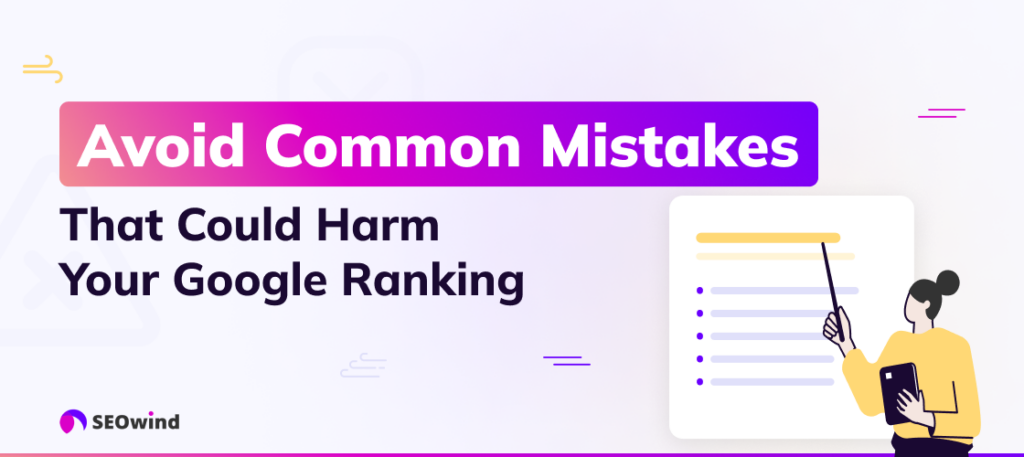
While focusing on strategies to get your website first on Google, it’s equally important to steer clear of practices that could harm your ranking. Google’s algorithms are designed to provide users with the most relevant, high-quality content. Engaging in tactics that violate Google’s guidelines can result in penalties that significantly impact your visibility in search results.
Some common issues include keyword stuffing, hidden text, cloaking, and participating in link schemes. While it might seem like a quick fix to address these challenges and boost your ranking, they can ultimately lead to long-term damage to your website’s reputation and search performance.
Penalties: Identifying and Rectifying Violations of Google’s Guidelines
If you find that Google has penalized your website, the first step is to identify the specific violation. Google provides a set of webmaster guidelines that outline best practices and prohibited techniques. Familiarize yourself with these guidelines to understand where your website may have gone wrong.
Once you’ve identified the issue, take immediate action to rectify the violation. This may involve removing spammy or irrelevant content, disavowing low-quality backlinks, or fixing technical issues on your website. It’s crucial to demonstrate to Google that you are committed to providing a positive UX and adhering to their guidelines.
After addressing the violation, you may sometimes need to submit a reconsideration request to Google. This process involves explaining the steps you’ve taken to resolve the issue and requesting that Google reevaluate your website. Be patient and persistent in your efforts, as your website may take some time to regain its previous ranking after a penalty.
Remember, the key to avoiding penalties and maintaining a strong presence on the first page of Google is to focus on creating valuable, user-centric content and following best practices for SEO. By staying informed about Google’s guidelines and prioritizing your audience’s needs, you can minimize the risk of falling into common pitfalls that could harm your website’s ranking and reputation.
FAQ
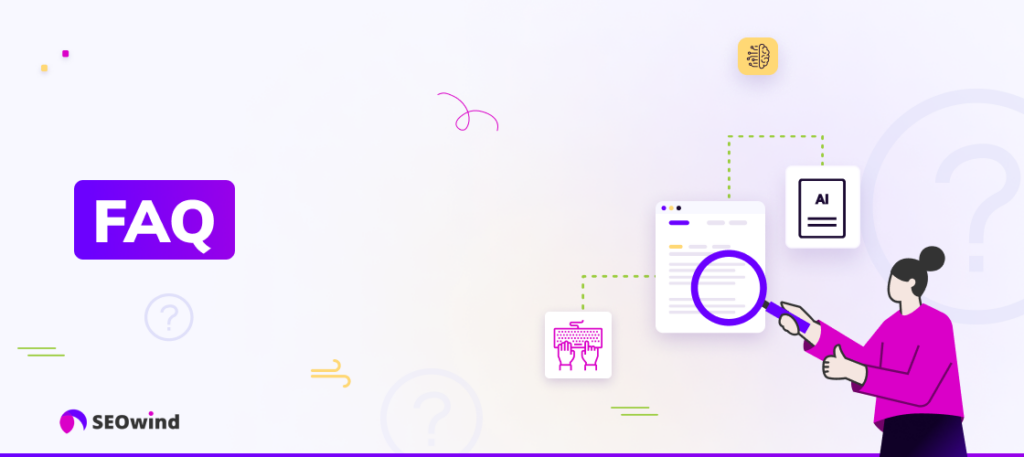
Timeframe Expectations for Seeing Results from SEO Efforts
One of the most frequent questions we hear is, “How long does it take to see results from my SEO efforts and reach page 1 on Google?” The answer isn’t straightforward, as it depends on various factors, such as the competitiveness of your niche, the current state of your website, and the effectiveness of your SEO strategy.
However, as a general rule of thumb, you should start seeing some improvements in your search engine rankings within 4-6 months of implementing a solid SEO plan. Keep in mind that this is just the beginning, and it may take longer to reach the first page for highly competitive keywords.
It’s crucial to approach SEO as a long-term investment rather than a quick fix. Consistently creating high-quality content, building relevant backlinks, and optimizing your website will yield sustainable results over time.
The Importance of Ongoing SEO Maintenance for Keeping the Top Spot
Once you’ve achieved a first-page Google ranking, you might think your work is done. However, SEO is an ongoing process that requires continuous effort to maintain and improve your position.
The search landscape is constantly shifting, with new competitors entering the market, algorithm updates rolling out, and user behaviors shifting. To stay ahead of the curve and retain your top spot, you need to engage in ongoing SEO maintenance.
This involves regularly updating your content to ensure it remains fresh, relevant, and aligned with current search intent. It also means monitoring your backlink profile, identifying toxic links that could harm your reputation, and actively seeking out new, high-quality linking opportunities.
Additionally, monitor your competitors’ strategies and adapt your approach accordingly. By consistently refining your SEO efforts, you can defend your first-page Google ranking and even aim for the highly coveted position zero with featured snippets.
SEO is a marathon, not a sprint. Investing time and resources into ongoing maintenance will pay off in the form of sustained visibility, traffic, and engagement for your website.
